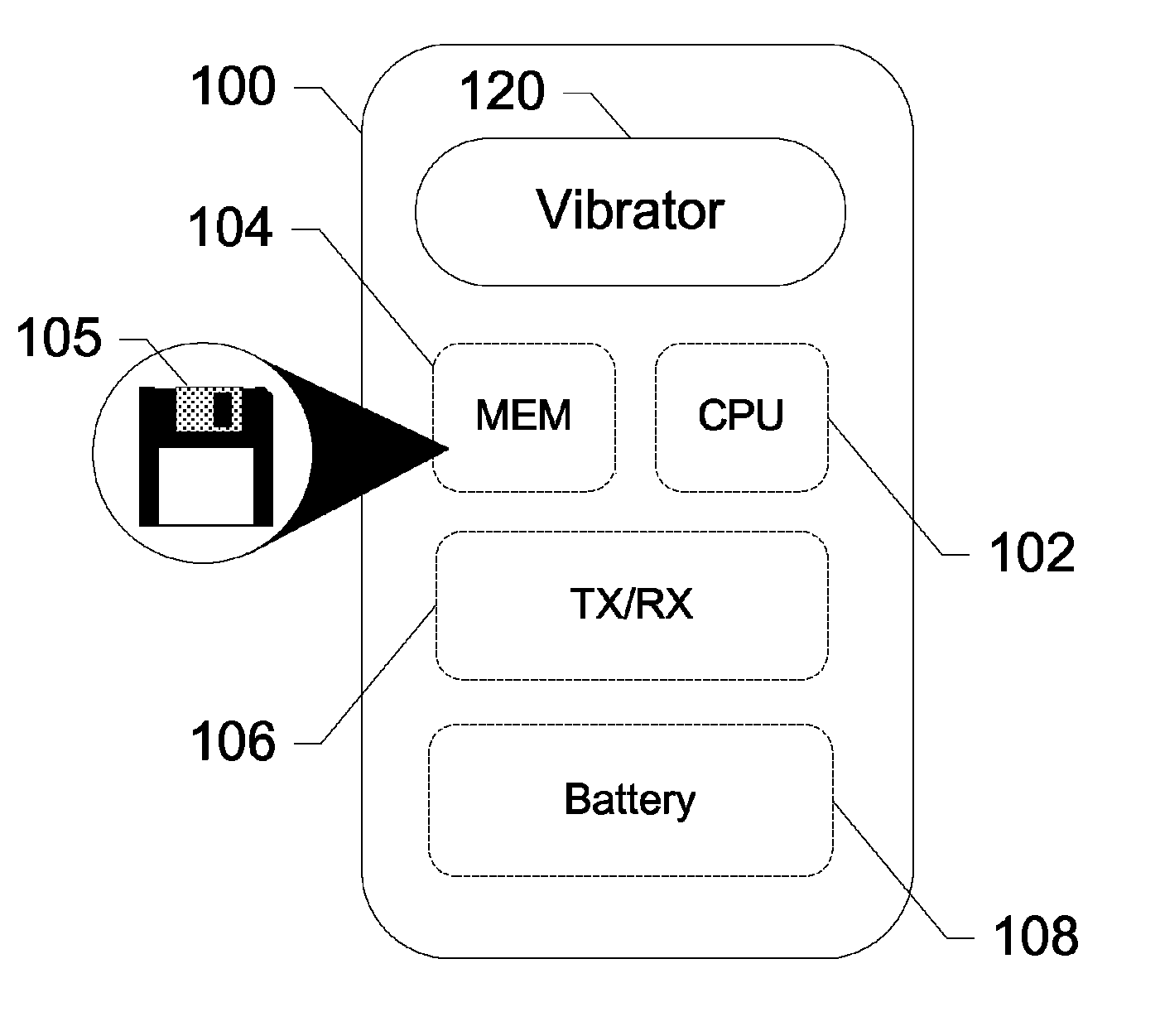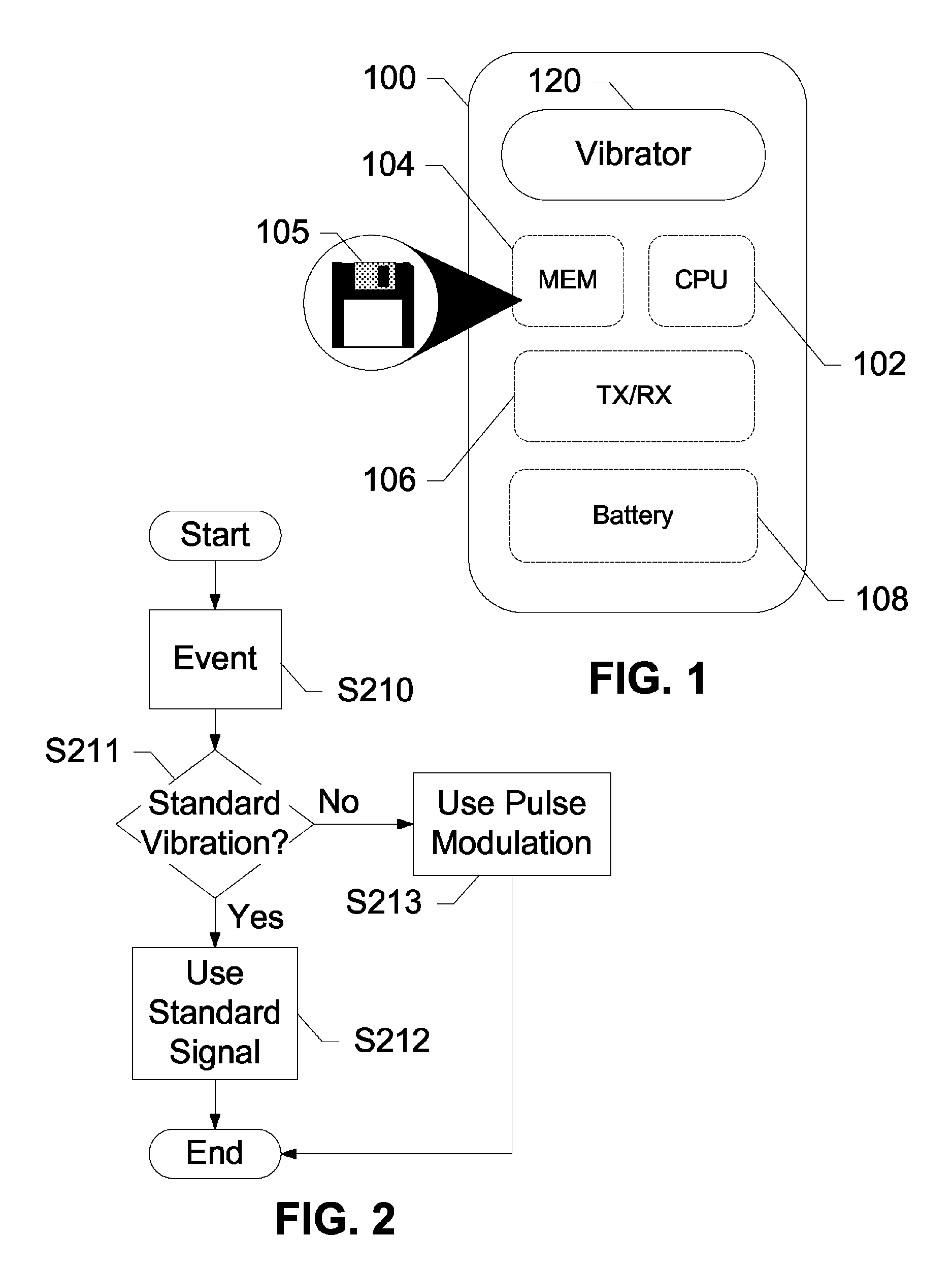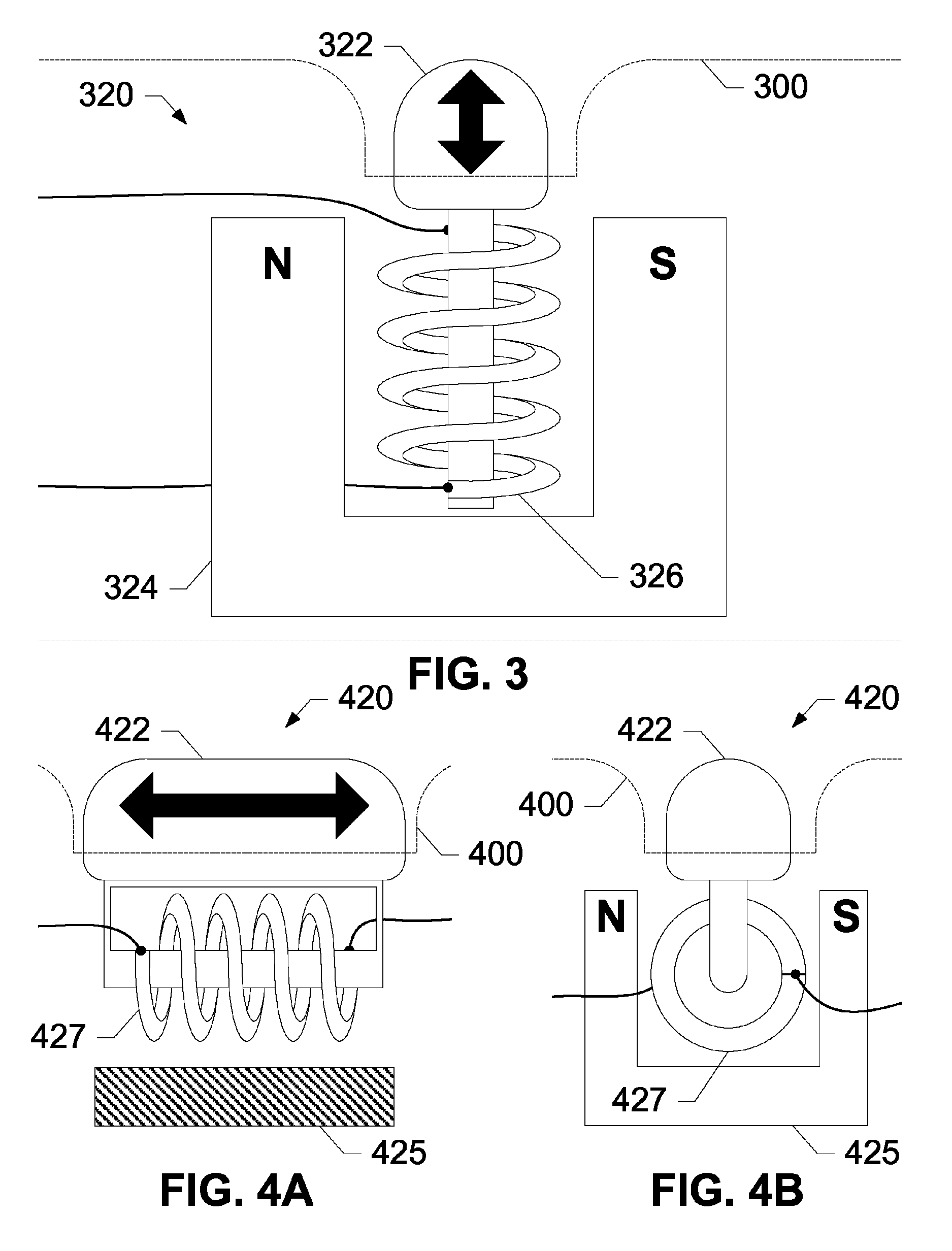Devices, systems, and methods for tactile feedback and input
a technology applied in the field of tactile feedback and input, can solve the problems of unsafe or socially unacceptable looking at the phone, a known hazard in driving, and the use of mobile consumer electronics
- Summary
- Abstract
- Description
- Claims
- Application Information
AI Technical Summary
Benefits of technology
Problems solved by technology
Method used
Image
Examples
Embodiment Construction
[0029]The present invention includes devices, systems, and methods for tactile communication. Exemplary embodiments of the present invention include devices for direct tactile input and having logic for conversion of speech and other forms of audio into vibrotactile sequences. Vibrotactile sequences are transmitted to haptic devices, such as vibrators. For instance, voice coil vibrators are used to create sensations of tapping and rubbing in addition to vibration.
[0030]Furthermore, current communication devices equipped with conventional vibrators are loaded with pitch modulation logic enabling the vibrators to output more specific tactile information such as pitch and intensity. Software techniques similar to pulse width modulation are used to create different levels of intensity. Switching the motor on and off at different frequencies can yield different intensities of vibration. Pulse modulation is a technique where the soft switch is turned off and on many times per second in or...
PUM
 Login to View More
Login to View More Abstract
Description
Claims
Application Information
 Login to View More
Login to View More - R&D
- Intellectual Property
- Life Sciences
- Materials
- Tech Scout
- Unparalleled Data Quality
- Higher Quality Content
- 60% Fewer Hallucinations
Browse by: Latest US Patents, China's latest patents, Technical Efficacy Thesaurus, Application Domain, Technology Topic, Popular Technical Reports.
© 2025 PatSnap. All rights reserved.Legal|Privacy policy|Modern Slavery Act Transparency Statement|Sitemap|About US| Contact US: help@patsnap.com



